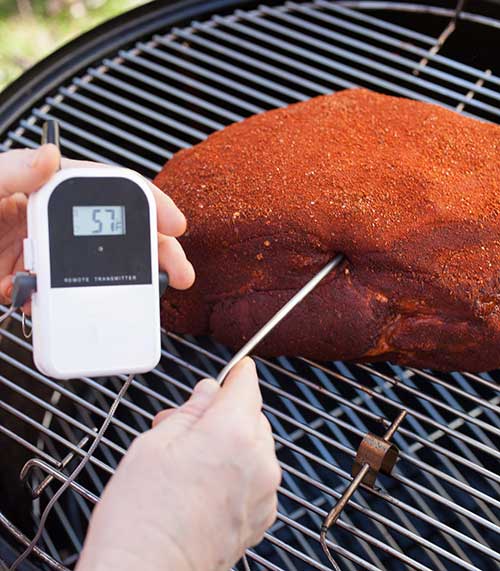Invest in a good-quality and reliable thermometer. The cost of a dry, overcooked, or otherwise ruined pork butt or strip loin of beef is possibly more expensive than the price of the thermometer that could have saved the meal and saved you the embarrassment.
Monitoring temperatures is a critical part of most cooking, but especially low and slow cooking, like roasting and barbecuing. It is highly recommend that you purchase a dual probe wireless thermometer that includes a transmitter and receiver. The two probes allow you to monitor the meat temperature and the cooking chamber temperature at the same time, and the remote station allows the thermometer to be wherever you are. You can set alarms and monitor the meat temperature without having to lift the cover of the cooking chamber. Many digital probes are available that will transmit the temperature to your smartphone so you can monitor throughout the cooking process.
This may sound like overkill, but these cooking processes require very specific temperatures and a reliable thermometer makes all the difference.
When using any type of meat thermometer, place the probe in the center of the thickest part of the meat. The end of the probe should not be very close to or touching any bones or fat pockets because they can cause an unreliable, inflated temperature reading.
Many ovens and slow cookers have temperature probe options. They are useful for monitoring the meat temperature while braising or roasting. It’s recommended that you periodically verify that the actual oven temperature matches the temperature setting using an oven thermometer. To do this, place the thermometer in the oven, preheat the oven to any temperature, and then make sure the temperature reading of the oven matches that of the thermometer. Ideally, they should be within a few degrees of each other.


